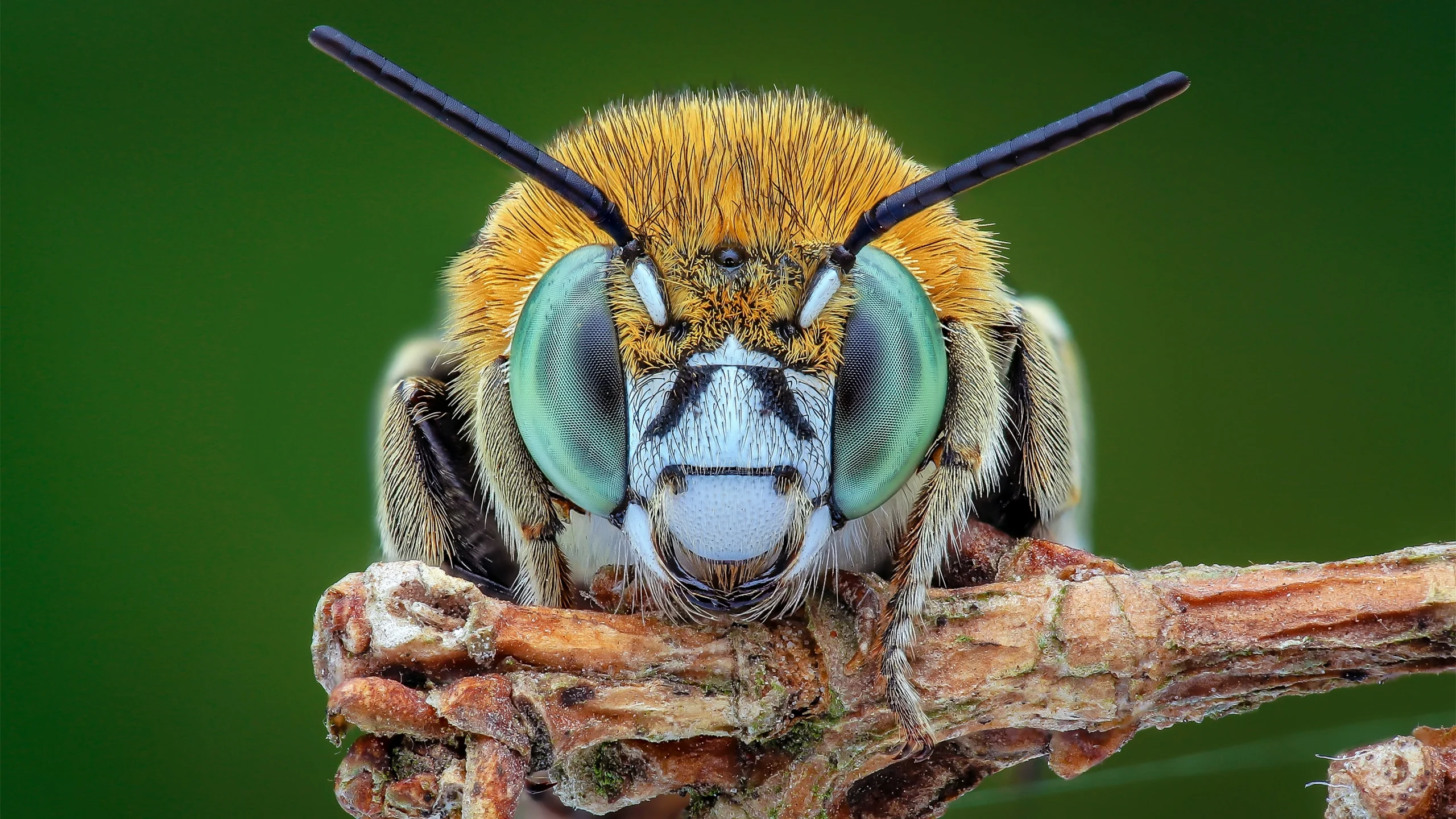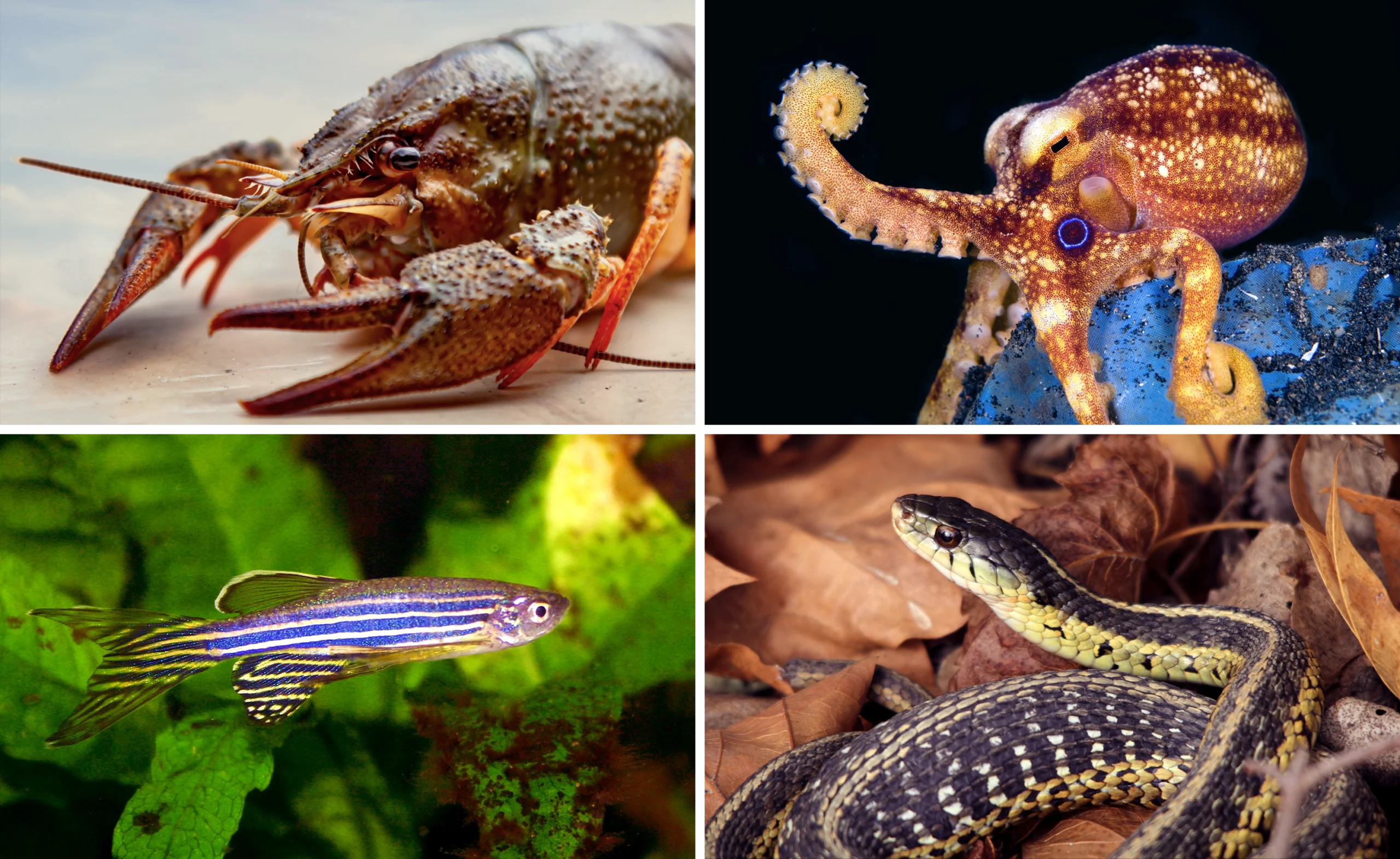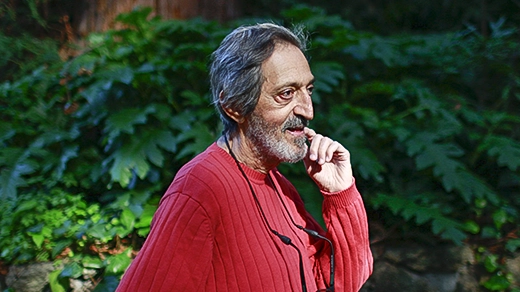Insects and Other Animals Have Consciousness, Experts Declare

What’s going on in the mind of a bee? There’s “a realistic possibility” of consciousness, according to a new declaration.
Tran The Ngoc/Shutterstock
Introduction
In 2022, researchers at the Bee Sensory and Behavioral Ecology Lab at Queen Mary University of London observed bumblebees doing something remarkable: The diminutive, fuzzy creatures were engaging in activity that could only be described as play. Given small wooden balls, the bees pushed them around and rotated them. The behavior had no obvious connection to mating or survival, nor was it rewarded by the scientists. It was, apparently, just for fun.
The study on playful bees is part of a body of research that a group of prominent scholars of animal minds cited today, buttressing a new declaration that extends scientific support for consciousness to a wider suite of animals than has been formally acknowledged before. For decades, there’s been a broad agreement among scientists that animals similar to us — the great apes, for example — have conscious experience, even if their consciousness differs from our own. In recent years, however, researchers have begun to acknowledge that consciousness may also be widespread among animals that are very different from us, including invertebrates with completely different and far simpler nervous systems.
The new declaration, signed by biologists and philosophers, formally embraces that view. It reads, in part: “The empirical evidence indicates at least a realistic possibility of conscious experience in all vertebrates (including all reptiles, amphibians and fishes) and many invertebrates (including, at minimum, cephalopod mollusks, decapod crustaceans and insects).” Inspired by recent research findings that describe complex cognitive behaviors in these and other animals, the document represents a new consensus and suggests that researchers may have overestimated the degree of neural complexity required for consciousness.
The four-paragraph New York Declaration on Animal Consciousness was unveiled today, April 19, at a one-day conference called “The Emerging Science of Animal Consciousness” being held at New York University. Spearheaded by the philosopher and cognitive scientist Kristin Andrews of York University in Ontario, the philosopher and environmental scientist Jeff Sebo of New York University, and the philosopher Jonathan Birch of the London School of Economics and Political Science, the declaration has so far been signed by 39 researchers, including the psychologists Nicola Clayton and Irene Pepperberg, the neuroscientists Anil Seth and Christof Koch, the zoologist Lars Chittka, and the philosophers David Chalmers and Peter Godfrey-Smith.
The declaration focuses on the most basic kind of consciousness, known as phenomenal consciousness. Roughly put, if a creature has phenomenal consciousness, then it is “like something” to be that creature — an idea enunciated by the philosopher Thomas Nagel in his influential 1974 essay, “What is it like to be a bat?” Even if a creature is very different from us, Nagel wrote, “fundamentally an organism has conscious mental states if and only if there is something that it is like to be that organism. … We may call this the subjective character of experience.” If a creature is phenomenally conscious, it has the capacity to experience feelings such as pain or pleasure or hunger, but not necessarily more complex mental states such as self-awareness.
“I hope the declaration [draws] greater attention to the issues of nonhuman consciousness, and to the ethical challenges that accompany the possibility of conscious experiences far beyond the human,” wrote Seth, a neuroscientist at the University of Sussex, in an email. “I hope it sparks discussion, informs policy and practice in animal welfare, and galvanizes an understanding and appreciation that we have much more in common with other animals than we do with things like ChatGPT.”
A Growing Awareness
The declaration began to take shape last fall, following conversations between Sebo, Andrews and Birch. “The three of us were talking about how much has happened over the past 10 years, the past 15 years, in the science of animal consciousness,” Sebo recalled. We now know, for example, that octopuses feel pain and cuttlefish remember details of specific past events. Studies in fish have found that cleaner wrasse appear to pass a version of the “mirror test,” which indicates a degree of self-recognition, and that zebra fish show signs of curiosity. In the insect world, bees show apparent play behavior, while Drosophila fruit flies have distinct sleep patterns influenced by their social environment. Meanwhile, crayfish display anxiety-like states — and those states can be altered by anti-anxiety drugs.

After reflecting on recent research into diverse animal minds, Jeff Sebo, Kristin Andrews and Jonathan Birch (from left) decided to organize scientists and philosophers to sign a declaration that extends consciousness to more animals.
From left: Kate Reeder; Ben Wulf; Maria Moore/LSE
These and other signs of conscious states in animals that had long been considered less than conscious excited and challenged biologists, cognitive scientists and philosophers of mind. “A lot of people have now accepted for a while that, for example, mammals and birds are either conscious or very likely to be conscious, but less attention has been paid to other vertebrate and especially invertebrate taxa,” Sebo said. In conversations and at meetings, experts largely agreed that these animals must have consciousness. However, this newly formed consensus wasn’t being communicated to the wider public, including other scientists and policymakers. So the three researchers decided to draft a clear, concise statement and circulate it among their colleagues for endorsement. The declaration is not meant to be comprehensive but rather “to point to where we think the field is now and where the field is headed,” Sebo said.
The new declaration updates the most recent effort to establish scientific consensus on animal consciousness. In 2012, researchers published the Cambridge Declaration on Consciousness, which said that an array of nonhuman animals, including but not limited to mammals and birds, have “the capacity to exhibit intentional behaviors” and that “humans are not unique in possessing the neurological substrates that generate consciousness.”
The new declaration expands the scope of its predecessor and is also worded more carefully, Seth wrote. “It doesn’t try to do science by diktat, but rather emphasizes what we should take seriously regarding animal consciousness and the relevant ethics given the evidence and theories that we have.” He wrote that he is “not in favor of avalanches of open letters and the like,” but that he ultimately “came to the conclusion that this declaration was very much worth supporting.”
Godfrey-Smith, a philosopher of science at the University of Sydney who has worked extensively with octopuses, believes that the complex behaviors those creatures exhibit — including problem-solving, tool use and play behavior — can only be interpreted as indicators of consciousness. “They’ve got this attentive engagement with things, with us and with novel objects that makes it very hard not to think that there’s quite a lot going on inside them,” he said. He noted that recent papers looking at pain and dreamlike states in octopuses and cuttlefish “point in the same direction … toward experience as being a real part of their lives.”
While many of the animals mentioned in the declaration have brains and nervous systems that are very different from those of humans, the researchers say that this needn’t be a barrier to consciousness. For example, a bee’s brain contains only about a million neurons, compared to some 86 billion in the case of humans. But each of those bee neurons may be as structurally complex as an oak tree. The network of connections they form is also incredibly dense, with each neuron contacting perhaps 10,000 or 100,000 others. The nervous system of an octopus, by contrast, is complex in other ways. Its organization is highly distributed rather than centralized; a severed arm can exhibit many of the behaviors of the intact animal.

Recent research on animal minds — including those of crayfish, octopuses, snakes and fish — suggests that consciousness “can exist in a [neural] architecture that looks completely alien” to ours, Peter Godfrey-Smith said.
Clockwise from top left: Svetlana123/iStock; Colin Marshal/Biosphoto/Science Source; MATTHIASRABBIONE/iStock; Jim Maley/iStock
The upshot, Andrews said, is that “we might not need nearly as much equipment as we thought we did” to achieve consciousness. She noted, for example, that even a cerebral cortex — the outer layer of the mammalian brain, which is believed to play a role in attention, perception, memory and other key aspects of consciousness — may not be necessary for the simpler phenomenal consciousness targeted in the declaration.
“There was a big debate about whether fish are conscious, and a lot of that had to do with them lacking the brain structures that we see in mammals,” she said. “But when you look at birds and reptiles and amphibians, they have very different brain structures and different evolutionary pressures — and yet some of those brain structures, we’re finding, are doing the same kind of work that a cerebral cortex does in humans.”
Godfrey-Smith agreed, noting that behaviors indicative of consciousness “can exist in an architecture that looks completely alien to vertebrate or human architecture.”
Mindful Relations
While the declaration has implications for the treatment of animals, and especially for the prevention of animal suffering, Sebo noted that the focus should go beyond pain. It’s not enough for people to prevent animals in captivity from experiencing bodily pain and discomfort, he said. “We also have to provide them with the kinds of enrichment and opportunities that allow them to express their instincts and explore their environments and engage in social systems and otherwise be the kinds of complex agents they are.”
But the consequences of bestowing the label of “conscious” onto a wider array of animals — particularly animals whose interests we are not used to considering — are not straightforward. For example, our relationship with insects may be “inevitably a somewhat antagonistic one,” Godfrey-Smith said. Some pests eat crops, and mosquitoes can carry diseases. “The idea that we could just sort of make peace with the mosquitoes — it’s a very different thought than the idea that we could make peace with fish and octopuses,” he said.
Similarly, little attention is given to the well-being of insects such as Drosophila, which are widely used in biology research. “We think about the welfare of livestock and of mice in research, but we never think about the welfare of the insects,” said Matilda Gibbons, who researches the neural basis of consciousness at the University of Pennsylvania and has signed the declaration.
While scientific bodies have created some standards for the treatment of lab mice, it’s not clear if today’s declaration will lead to new standards for the treatment of insects. But new scientific findings do sometimes spark new policies. Britain, for example, enacted legislation to increase protection for octopuses, crabs and lobsters after a London School of Economics report indicated that those animals can experience pain, distress or harm.
While the declaration makes no mention of artificial intelligence, the issue of possible AI consciousness has been on the minds of animal-consciousness researchers. “Current AI systems are very unlikely to be conscious,” Sebo said. However, what he’s learned about animal minds “does give me pause and makes me want to approach the topic with caution and humility.”
Andrews hopes that the declaration will spark more research into animals that have often been overlooked, a move that has the potential to further expand our awareness of the scope of consciousness in the animal world. “All these nematode worms and fruit flies that are in almost every university — study consciousness in them,” she said. “You already have them. Somebody in your lab is going to need a project. Make that project a consciousness project. Imagine that!”





